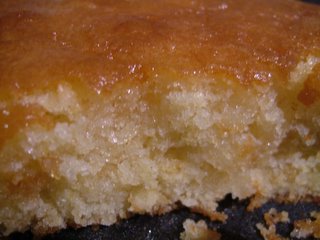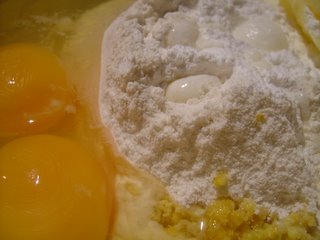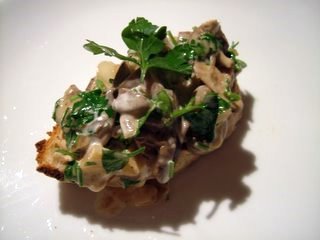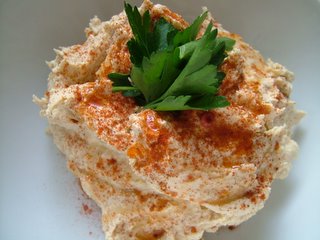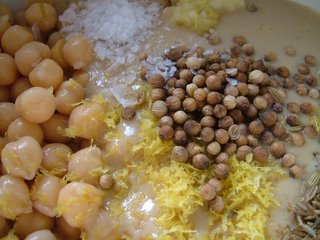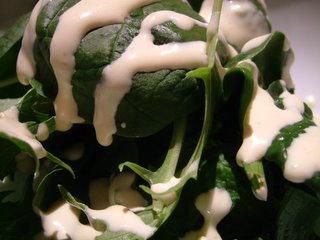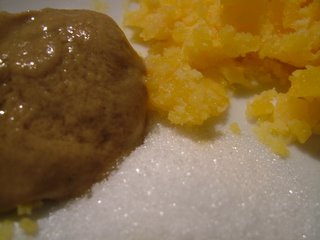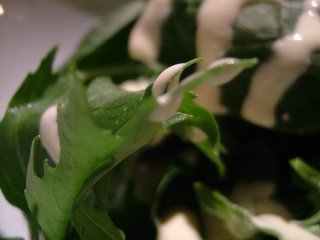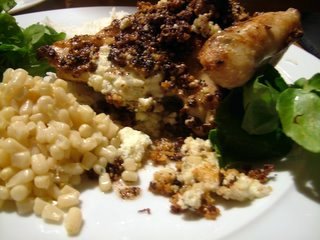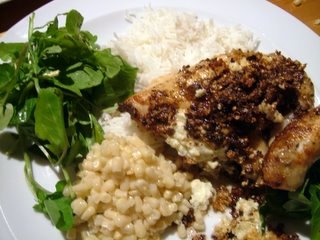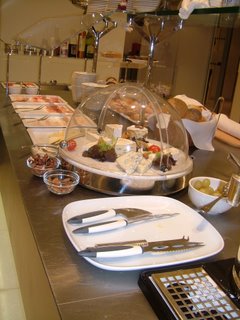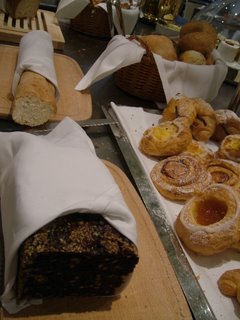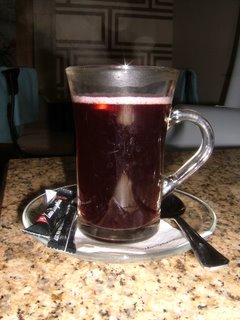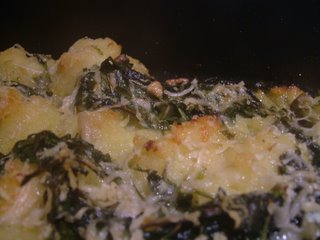 Everything in the garden is dead or hibernating. Even the slugs seem to have vanished for warmer climes. So today’s Weekend Herb Blogging post (thanks to Kalyn from Kalyn’s Kitchen for organising things again), although packed with herbs, is packed with herbs from the supermarket. I feel like I’m cheating. Roll on summer.
Everything in the garden is dead or hibernating. Even the slugs seem to have vanished for warmer climes. So today’s Weekend Herb Blogging post (thanks to Kalyn from Kalyn’s Kitchen for organising things again), although packed with herbs, is packed with herbs from the supermarket. I feel like I’m cheating. Roll on summer.
You might be used to gnocchi as little Italian dumplings made of potato, served in a sauce. Gnocchi alla Romana are the traditional form of dumpling from Rome, and they don’t contain potato; instead, they’re made with semolina, and they’re usually served with a flavoured butter. Clearly going to Prague didn’t manage to put me off dumplings.
Semolina is durum wheat, ground coarsely. In the UK you may find it in the same aisle as the ready-made custard, the jelly and the Angel Delight; it’s used in English cookery to make a sort of sloppy pudding. I’d recommend feigning Italian-ness for the day and using it to make these gnocchi; they’re light, fluffy and infinitely nicer than any doughy pudding. You’ll often see semolina gnocchi baked into sliced or cookie-cut shapes, but I prefer to make them into roughly-textured balls; this way you get a larger surface area, and therefore more delicious crusty bits.
The gnocchi are roasted in a garlic-flavoured butter which has been infused in a warm place with handfuls and handfuls of herbs. This time I used great gouts of flat-leaved parsley, basil and tarragon; use whatever comes to hand in yours. Chervil is excellent if you you can get your hands on any. Rosemary and sage are also very good in this.
To serve between four and six people (depends on levels of hunger; frankly, I’ve had three people finish a dish this size in about five minutes flat, making self-satisfied gargling noises), you’ll need:
Herbed butter
1 pack butter (1/2 lb)
1 glug olive oil (about a shot glass full)
5 cloves garlic, crushed and chopped
Around 4 large handfuls fresh herbs – I used parsley, tarragon and basil
Salt and pepper
Gnocchi
1 and a half pints milk
12 oz semolina
1/2 lb grated parmesan (plus some extra to sprinkle)
2 eggs
Freshly grated nutmeg
Salt and pepper
Start by melting the butter with the olive oil over a very, very gentle heat. (I realise this is an awful lot of fat. Personally, I don’t find this terribly upsetting, but if you are the sort to be upset by butter, please still try it; you can spend the week following your triumph eating rice cakes.) Stir in all the herbs and garlic until they’re coated with the butter and leave in a warm place for an hour or so.
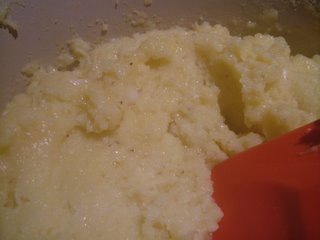 While the butter is infusing, grate a little nutmeg into the milk, sprinkle in some salt and pepper, and bring the milk to a simmer. When it starts bubbling, keep it on a low heat and pour the semolina into it in a very thin stream, stirring all the time. Keep pouring and stirring until you have a thick paste that you can stand a spoon in. Take it off the heat, beat the eggs and the parmesan into the semolina mixture, and leave the pan until the mixture is cool enough to handle.
While the butter is infusing, grate a little nutmeg into the milk, sprinkle in some salt and pepper, and bring the milk to a simmer. When it starts bubbling, keep it on a low heat and pour the semolina into it in a very thin stream, stirring all the time. Keep pouring and stirring until you have a thick paste that you can stand a spoon in. Take it off the heat, beat the eggs and the parmesan into the semolina mixture, and leave the pan until the mixture is cool enough to handle.
 Form the mixture into little balls (try for something a bit smaller than a ping-pong ball) with your hands. Don’t make them too smooth; a rough surface is better for making the lovely crispy bits. Place them in one layer in a roasting tin, pour over the butter (which will now have infused with the gorgeous rich flavour of the herbs and garlic), sprinkle with parmesan cheese, and put in an oven at 200 C (390 F) for fifty minutes until everything is brown and bubbling. Serve to loud applause.
Form the mixture into little balls (try for something a bit smaller than a ping-pong ball) with your hands. Don’t make them too smooth; a rough surface is better for making the lovely crispy bits. Place them in one layer in a roasting tin, pour over the butter (which will now have infused with the gorgeous rich flavour of the herbs and garlic), sprinkle with parmesan cheese, and put in an oven at 200 C (390 F) for fifty minutes until everything is brown and bubbling. Serve to loud applause.




